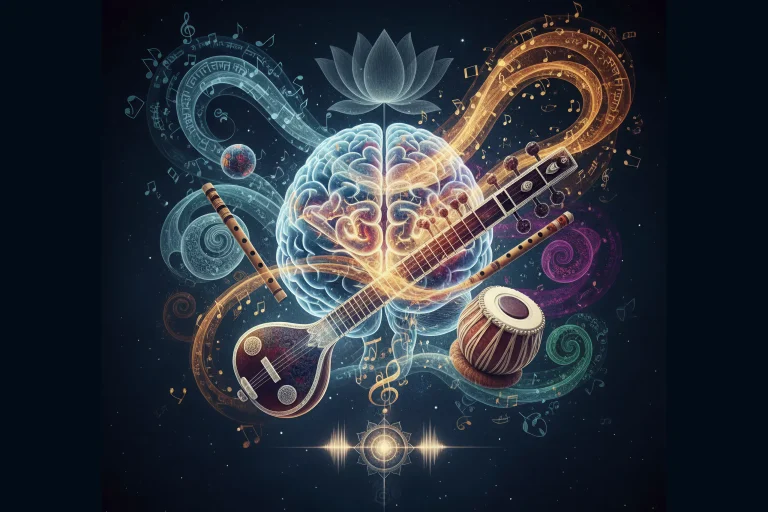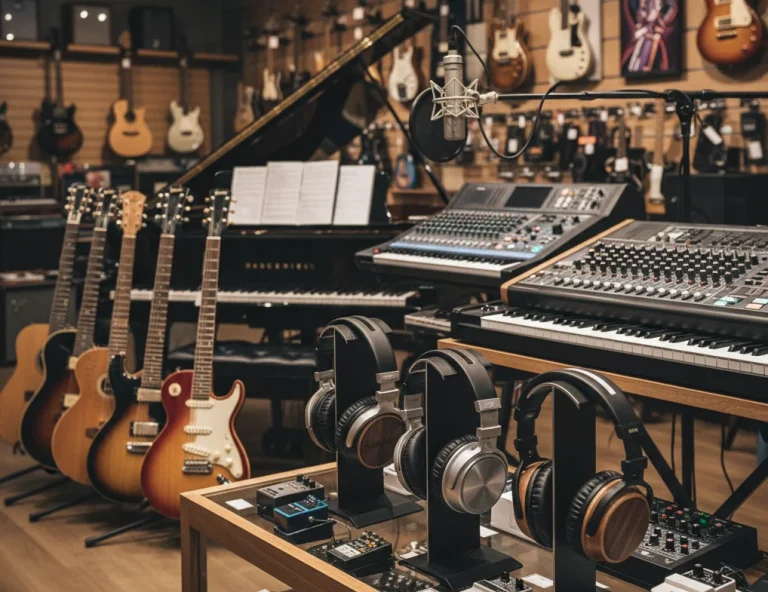All Topics
- Alchemizing Music Concepts for Students
- Artist Spotlight
- artium gift card
- Artium Maestros
- Artium News
- buying guide
- Carnatic Music
- Devotional Music
- Editorials by Ananth Vaidyanathan
- Film Music
- Guitar
- Hindustani Classical Music
- Indian Classical Music
- Indian Folk Music
- Insights
- Instruments
- Karaoke Singing
- Keyboard
- Kids Music
- maestros
- Music Education
- Music for Kids
- Music Industry
- Music Instruments
- Music Legends
- Music Theory
- Music Therapy
- Piano
- piano guide
- Success Stories
- Tamil Film Music
- Telugu Film Music
- Time Theory
- Tools
- Uncategorized
- Vocal Singing
- Vocals
- western classical music
- western music
- Western vocal music
Indian Classical Music, western classical music
What is Music Genre? A Beginner’s Guide to Understanding Music Genres
What is Music Genre? A Beginner’s Guide to Understanding Music Genres

Table of Contents
In the age of online music streaming, the most common term that often gets thrown around is “Music Genre.”
If you go on Spotify, Amazon Music, or any other music streaming app, you’ll see categories like classical, Rock, Jazz, Hip-hop, Metal, or Indian classical. With so many music styles to choose from, it’s easy to feel overwhelmed by the vast sea of sound. Each of these categories is referred to as a music genre.
But, exactly, what music genre is? And why does it matter for someone learning music?
If this question ever popped into your head, then don’t worry. You are in the right place.
In this beginner’s guide, we’ll break down the different music genres, why they are important, and how understanding them can make your musical journey more exciting and rewarding.
What is Music Genre?
Music genres are nothing but categories or types of music. Genres are just labels that group songs or pieces of music based on shared characteristics in sound and tradition. If a song has a distinct style of beat, instrumentation, and mood, it is likely to belong to a specific genre.
For example, distorted guitars, aggressive drum patterns, and screaming vocals would typically be categorized under rock or metal music types. At the same time, a piece featuring a symphony orchestra playing structured melodies would be classified as a classical music genre. Common traits define music genres.
These include rhythm (groove and tempo of music), instrumentation (which involves the use of instruments/electronic sounds), harmony, melody (the types of chords or scales used), the vocal style (singing, rapping, or growling sounds), and even the cultural origin of the music. When a group of songs shares many of these elements, they form a recognizable genre.
Every culture has its own set of music genres, and new genres emerge as musicians experiment and blend styles. There isn’t a single, fixed “music genres list” because music is constantly evolving; however, learning about the major genres is a great starting point for any music lover or aspiring musician.
Why Understanding Music Genres Matters?

Here are a few reasons why understanding music genres is important for both avid music lovers and active learners.
- Easier Discovery: Understanding genres helps you organise music. It can help you easily identify more types of music that you like from similar music genres. Radio stations and TV playlists are often genre-based (Example – top 40 charts on the radio are usually of pop music genres, or a “rock hour” on the radio). Knowing your favourite category of music helps guide you to new songs and artists you will enjoy.
- Deeper Appreciation: Understanding genres lets you appreciate the cultural and historical context of the music. For instance, when you hear a piece and recognize it as an Indian classical or blues song, you understand the tradition and story it carries. This makes listening to music more enriching than just some random music.
- Focused Learning: Genres provide a roadmap for aspiring and established musicians. If you love classical music, your training may focus on notation and technique. Love rock or pop? Your focus will be more on guitar riffs and vocal microphone techniques. So, choosing a genre or genre/s gives your practice a clear direction.
- Musical Identity: Musicians strongly identify themselves with a genre, e.g. I’m a jazz pianist” or “Heavy Metal Guitarist”. So, understanding genres helps one identify exactly where they fit in the musical landscape. It is empowering to say what you specialize in, thereby allowing you to connect with fellow musicians who share similar interests.
- Creative Inspiration: Even if you’re just a listener, exploring different music genres can inspire you. You might start as a rock fan and discover you also love elements of electronic music genres or folk music. For creators, genre knowledge can spark ideas – for instance, blending elements from different music genres to create something new.
How do Genres Influence Music Learning and Teaching at Artium Academy?

Knowing a student’s music genre preferences can help teachers plan their lessons and tailor their teaching approach. At Artium Academy, our online music classes are designed to ensure each style of music gets a unique and dedicated approach and skill set.
For example, consider two vocal students: one training in Indian classical music and another in Western pop vocals. The classical student will spend more time perfecting ragas (melodic frameworks) and Taal (rhythmic cycles) to develop voice control and improvisation skills. On the other hand, a pop student may focus on modern vocal techniques, microphone handling, stage presence, or singing Broadway hits. Both are learning to sing, but the content and methods differ significantly because of the styles of music.
The same idea applies to instruments as well. A piano lesson centered on Western classical music will involve reading sheet music and understanding composers like Mozart or Beethoven. Meanwhile, a piano lesson for Bollywood or Jazz styles will emphasize playing chords by ear, improvising, and understanding different scales or modes. A rock guitar class will teach power chords and electric guitar solos, whereas an acoustic guitar class for folk music will focus on strumming patterns and melodies.
By understanding the genres correctly, students stay motivated and get to play the music they love. That is why we teach foundational techniques with genre-specific repertoire. This means you may learn a popular music genre song, but we’ll sneak in some basic training (such as vocal exercises or scales) to improve your fundamentals. Our experts are adept at teaching different genres, so you will learn from a mentor who understands the style you want to master.
Genre is a bible for music education as it molds everything from the choice of practice songs to the technical exercises you may do. That is why we focus on genre in our teaching; it ensures that your learning journey is both relevant and engaging, ultimately making it effective.
Essential Guide to Different Music Genres and Styles
Navigating the world of music genres can be overwhelming for a beginner. This section provides a handy guide to understanding how genres function, exploring the key elements that define a genre, its subgenres, and related musical styles.
Key Elements that Define a Genre
Each genre has a unique “fingerprint” made up of a few key musical elements. Here are the main factors that distinguish one genre from another:
- Rhythm
A rhythm is the beat or the groove of a song. Every genre has a signature rhythm. For example, reggae is known for its off-beat syncopation, and electronic dance music has a steady, driving beat at a high tempo. Through a rhythmic pattern (fast/slow, straight/swung), one can instantly identify whether a song is jazz, techno, hip-hop, metal, or something else.
- Instrumentation
Different music genres use different instruments and sounds. Often, a genre can be identified by the instruments used in the songs—for example, rock music centers around electric guitars, bass guitars, and drums. Jazz centers around the saxophone, piano, and double bass.
Electronic music genres use synths and computer-generated sounds. Indian music genres, such as Hindustani and Carnatic, primarily utilize instruments like the sitar, tabla, or violin. The use of different instruments gives each genre a distinct tone and color.
- Harmony & Melody
These are the chords and scales that are the musical pillars. For instance, Blues songs typically follow a 12-bar chord progression, and popular music genres often adhere to catchy and straightforward four-chord progressions.
Classical and jazz genres employ complex chord structures and melodies that traverse a range of scales. Indian classical music employs specific ragas (melodic frameworks) that lend these songs a unique flavor. By listening to the harmony and melody, you can often tell a song’s genre (a church hymn vs. a rock anthem has very different melodic styles).
- Vocal Style
The art of delivering vocals is a matter of vocal style. In Opera or Indian classical music, singers employ precise, trained techniques and wide vocal ranges. Pop and R&B feature more soulful singing, often accompanied by riffs and runs.
Rock and Metal usually involve powerful, belted singing and even screaming. Hip hop genres feature rapping or rhythmic spoken lyrics instead of singing. The tone, technique, and language of the vocals are key indicators of the genre.
- Cultural Context
Music never emerges from a vacuum because every genre has its roots in a particular community or era. For instance, jazz came from African American communities in the early 20th century, bringing with it a culture of swing dance and improvisation. K-Pop (Korean pop) carries the contemporary Korean culture and language to a global audience.
Knowing the cultural context (such as Jamaican roots for reggae or the spiritual and devotional origins of gospel music) helps you understand a genre’s purpose and soul. Even when two genres use similar instruments, their cultural background can make them feel very different.
Evolution of Musical Genres Over Time
Music has evolved constantly over time. Often, a genre starts in a particular era and place, and then artists add their twists and creativity to it. For example, the rock genre style emerged in the 1950s, when artists blended elements of blues and country music.
By the 1970s, it had evolved into new subgenres, including heavy metal with its loud, distorted guitar and fast double bass; punk rock with its raw, fast-paced energy; and, later, indie rock, alternative rock, and other genres. Each of these sub-genres evolved as musicians experimented and audiences’ tastes changed.
The same pattern of evolution applies to almost every different music genre. For example, Western classical music progressed through many styles of music over the centuries, each with its own distinct sound.
The other prominent style, Indian classical music, has deep roots in tradition and has been refined for over 1,000 years, yet it continues to evolve with modern influences and fusion projects. Jazz evolved into bebop, wing, fusion, and other jazz styles, and hip-hop of the 1970s is very different from the latest sub-genres, such as trap and lo-fi hip-hop, that you hear today.
The credit for this evolution is due to technological and cultural shifts. With the advent of electronic instruments and software, new music genres emerged in the late 20th century. With the advent of the internet and global connectivity, music from one part of the world (K-pop in Korea or Reggae in Jamaica) quickly became famous elsewhere.
Genres constantly borrow from each other – think of rap-rock fusions or classical instruments being used in film soundtracks – resulting in new types of music that don’t fit neatly into one box.
This suggests that genres have a family tree, branching out and occasionally merging back together to form hybrid styles. Music’s evolving nature keeps things fresh and exciting. As a learner, you will always have new sounds to discover and new directions to explore.
Genre Vs. Sub-Genre Vs. Style: What’s the Difference?
When exploring music, you will often encounter terms such as genres, subgenres, and styles. But what do they really mean? While they may sound interchangeable, each has a distinct role in helping to categorize and understand music more effectively.
Here is a simple breakdown to help you navigate the music world with clarity and confidence.

8 Major Categories of Music Genres
There are hundreds of genres out there, but let’s look at some of the major types or categories and examples of music genres you’re likely to encounter:
1. Classical Music (Western & Indian)
Classical music is an umbrella term for all established, formal musical traditions. Western classical music encompasses symphonies, operas, and chamber music, typically written in notation and performed by orchestras or soloists. On the other hand, Indian classical music is based on ragas and talas and is largely improvised within these structures.
2. Pop Music
Pop is short for popular music, which refers to the famous mainstream songs that you hear on the radio and often have global appeal. This genre typically features memorable melodies, straightforward chord progressions, and lyrics about familiar themes such as love, friendship, and fun.
Predominantly, keyboards, guitars, drums and electronic effects are used in the songs. Today, pop has evolved, and its influence is evident in the hip-hop beats or EDM flair that it has absorbed from other genres.
3. Rock Music
Rock music was born in the 1950s and went on to become one of the most influential styles. Its main characteristics are strong backbeat rhythms and prominent use of electric guitars, bass, and drums.
Rock has numerous sub-genres (or rock music types) such as hard rock, heavy metal, punk rock, alternative rock, and indie rock – each with its own twist, from the high-energy solos of metal to the DIY ethos of punk. Classic rock bands like The Beatles and Led Zeppelin, as well as modern rockers, share a distinct rebellious energy and a love for the guitar-driven sound.
4. Jazz & Blues
Both Jazz and Blues originated in African American communities of the early 20th century. Blues is an older genre known for its soulful expression of hardship and emotion. Jazz evolved a bit later and is characterized by swing rhythms, improvisation, and complex harmonies.
These genres heavily influenced later music; for example, rock and R&B evolved from the foundations of blues and jazz.
5. Hip hop & R&B
Hip-hop is a cultural movement that originated in the 1970s in New York. Musically, hip-hop genres are characterized by rhythmic spoken lyrics (rap), DJing and beat-making, as well as elements of funk, soul, or electronic music. It features many sub-styles, ranging from old-school rap to trap and conscious hip-hop.
R&B (Rhythm and Blues) is another genre that developed from early blues and soul, and today it often overlaps with hip-hop in artists and style. Modern R&B singers, such as Beyoncé and The Weeknd, blend soulful singing with hip-hop production. These genres dominate many popular music charts today, with their emphasis on rhythm, groove, and urban storytelling.
6. Electronic Music
This genre got its name because the music is primarily made with electronic gear (synths, drum machines, computers). This includes a list of music genres, such as techno, house, trance, and dubstep, often collectively referred to as EDM (Electronic Dance Music).
It also includes more ambient or experimental electronic styles. Electronic tracks typically feature programmed beats and synthesized sounds, and they revolutionized music production in the late 20th century. DJs and producers are the stars of this world, creating soundscapes that range from mellow chill-out music to high-energy festival anthems.
7. Country Music
Country music originated in the Southern United States, drawing inspiration from folk and blues. It is known for its storytelling lyrics and instruments like acoustic guitar, fiddle, banjo, and pedal steel guitar. Traditional country music has a warm, twangy sound—picture an old Johnny Cash song or a Dolly Parton ballad.
Modern country can sometimes blend with pop or rock (as in country pop or country rock), but it still centers on heartfelt songwriting and memorable choruses that fans can sing along to.
8. Folk & World Music
Folk music refers to traditional songs and styles that have been passed down through generations, often within a culture or region. Examples include Celtic music from Ireland, American folk songs, and folk songs from various Indian states.
Folk music usually features acoustic instruments and focuses on lyrics and melody that reflect everyday life and cultural stories.
World music genres encompass a diverse range of traditional and folk music from around the world, including everything from African drumming circles to Latin American salsa and Middle Eastern oud music.
These genres may not be chart toppers, but they are rich in diversity and heritage. World and folk music remind us that music is a global language with countless dialects.
Indian Music Genres
India has a rich musical heritage, with its own distinct set of genres that sometimes differ significantly from Western categories. Here are some key Indian music genres –
- Hindustani Classical Music – This is one of the main classical genres from India, primarily found in northern and central India. It is based on ragas and talas and is improvisational, where artists explore a raga in depth during a performance.
- Carnatic Classical Music – This is one of the primary forms of Indian classical music, prevalent in the southern part of India. Like Hindustani, this genre revolves around ragas and talas. Carnatic performances are known for their technical virtuosity and devotional vibe. Both Indian classical styles have intricate structures and require years of training, but they reward the listener with rich, nuanced soundscapes.
- Indian Film Music- This genre encompasses films produced in regional languages, including Hindi, Tamil, Telugu, Kannada, and Malayalam. Combined, they produce hugely popular music. Film music in India is a genre of its own, where you will find elements of pop, classical, folk, and more, depending on the song.
Playback singers sing the songs in film music and are the pop music of India, enjoyed by all ages. If you’ve heard catchy Hindi songs or Tamil hits, you’ve experienced this vibrant genre.
- Folk Music– India is a land of diverse cultures, and each region has its unique folk music. These songs are usually tied to festivals, agriculture, or daily life. For example, Punjabi Bhangra music, Rajasthani folk, Bengali Baul songs, Marathi Lavani, and many more.
Folk music typically employs regional instruments (such as the dhol drum in Punjab or the ektara in Bengal) and is sung in local languages. Each folk genre has its unique flavor, but all reflect the life and history of the community from which they originate.
- Ghazals and Devotional Music – Ghazals are poetic songs about love or philosophy, set to light classical music. Artists like Jagjit Singh made them very popular. Devotional music includes Bhajans, Kirtans, and other spiritual music performed to praise a deity.
This music can be found in temples or at home functions and often has simple tunes that everyone can sing along to, sometimes with call-and-response patterns. Both ghazals and devotional songs are more about conveying emotion and devotion than technical complexity, and they remain widely cherished genres in India.
Why do Genres Matter for Musicians and Music Learners?
If you’re an aspiring musician, then these genres are not just labels; they are your learning pathways. When you decide to learn a particular genre, you are choosing what skills you will hone. For instance, if you focus on classical piano, you will develop sight-reading and intricate technique. Likewise, if you concentrate on blues piano, you may spend more time learning to improvise and play by ear. By identifying a genre, a musician can set a clear goal and develop a relevant repertoire to practice.
Not only that, but knowing genres also helps you build versatility. For example, if you have learned classical (Western or Indian), you will have strong fundamentals that you can apply to sing, pop, or jazz. It is the same if you’re playing guitar for popular music genres. You can likewise dive into flamenco or classical guitar to expand your repertoire. In each case, understanding the conventions of a new genre becomes easier because you already appreciate that different music genres have different “rules.”
It is empowering to be familiar with genres when collaborating or performing. It gives you leverage when someone says, “Let’s jam on a blues in G” or “We’re playing this piece in rock style”. As a musician, being genre-aware can help you switch styles on the fly, communicate more effectively with your bandmates, and connect more deeply with your audience.
Ultimately, exploring various genres during your learning journey can spark creativity – you might discover a style that truly brings you alive or even blend influences to create your signature sound. All in all, genres give structure to your musical journey while also offering a world of inspiration.
Artium Academy’s Approach to Genre-Based Learning
At Artium Academy, we ensure that our students learn from the best. That’s why we offer structured programs that celebrate genre diversity while building a solid musical foundation. We want our learners to understand the music they love. Here’s how we incorporate genres into our teaching –
- Diverse Course Selection: We offer courses across a wide range of genres and styles. We offer classes in Indian Classical Music (Hindustani and Carnatic) and Popular and Film Music (Hindi, Tamil, Telugu, Malayalam, and Kannada). We have Western vocals, guitars, piano/keyboard, and even niche genres like Ghazal and devotional singing.
- Expert mentors & Curated Curriculum: Our courses are curated by legendary Indian musicians, including Sonu Nigam, Aruna Sairam, K.S. Chithra, Shubha Mudgal, Louiz Banks, Raju Singh, and more. Also, we have recently introduced a Globally Recognised Music Programme that is at par with prestigious international music institutions. This means you can learn from the best and ensure your learning is appreciated worldwide.
- Personalized and performance-oriented: All our courses are taught live in one-on-one online music classes, ensuring every learner receives the personal attention they deserve. Not only that, but every lesson is tailored to a student’s interest, pace, and skill level. If you’re interested in learning to play guitar in a rock style, we’ll match you with a mentor who has a deep understanding of it.
This helps you pick songs that you love from the genre you like, ensuring you are highly motivated. Additionally, our performance showcases and assessments are often genre-themed, giving you a chance to perform a rock ballad or a classical kriti on a virtual stage. By focusing on real musical pieces from day one, we ensure you gain practical experience in your chosen genre.
- Strong Foundations Across Genres: While we celebrate differences, we also know the value of fundamentals. Our philosophy is to blend foundational training (like ear training, vocal exercises, or technique drills) with genre-specific learning.
For instance, a Bollywood music student will still learn core vocal techniques and perhaps some classical basics to improve their singing, even as they focus on film songs. This way, no matter which genre you start with, you build skills that can carry over if you explore other genres later.
Embrace Your Musical Journey
If music is a journey, then genres are like paths on the map. Now that you have an understanding of the genres, you are equipped to navigate the world of music with more confidence and ease. These genres are here to inspire you. So, don’t be afraid to explore different genres, as they are all part of the journey. The key is to keep exploring and enjoying the music.
At Artium Academy, we are passionate about helping our learners in their journey of music learning. From Bollywood tunes to composing jazz tunes and practicing classical scales, we ensure that your learning experience is both fulfilling and fun. With so many types of music to discover, there’s always something new to learn and love.
So go ahead and follow your curiosity – listen to different music genres, try playing songs from a style you’ve never tried before, and embrace the rich diversity of music.
Happy learning and happy jamming! We can’t wait to see which musical path you choose to walk, and we’re here to support you every step of the way.
FAQs on Music Genres
There’s no official fixed list, but the majority of genres include Classical, Jazz, Blues, Rock, Pop, Hip-Hop/Rap, R&B, Electronic/Dance, Country, and Folk/Traditional. These cover most of the music you hear, though there are many sub-genres within it.
The exact number of music genres is unknown, as they are finely divided, and new genres emerge over time.
Currently, some of the most popular genres worldwide include Pop, Hip-Hop/rap, Rock, and R&B. Electronic Dance music is particularly popular among younger listeners.
Music genres are important because they organize the vast world of music into recognizable categories. For listeners, genres make it easier to find music that matches their taste (“I like jazz” or “I’m into electronic music”). For musicians and learners, genres provide a focused path for developing skills and repertoire. Genres also carry cultural importance – they preserve musical traditions and histories, and they set expectations for what a song might sound like.
Depending on your interests and goals, you can start learning a genre that excites you the most. There’s no wrong choice: you can always start with one genre and later explore others. Many musicians cross-train in multiple genres over time.
Absolutely yes! With the growth of e-learning, you can find online music classes for virtually any genre you want to learn. Artium Academy, for example, offers live online courses in a wide range of genres, including classical music, rock, pop, and Indian music.
Learning online means you can connect with expert instructors in your preferred style from anywhere, on a schedule that suits you. So, whether you want to learn Hindustani vocals, jazz piano, or electric guitar, there’s an online course out there for you – and you can learn your favorite genre from the comfort of home.







